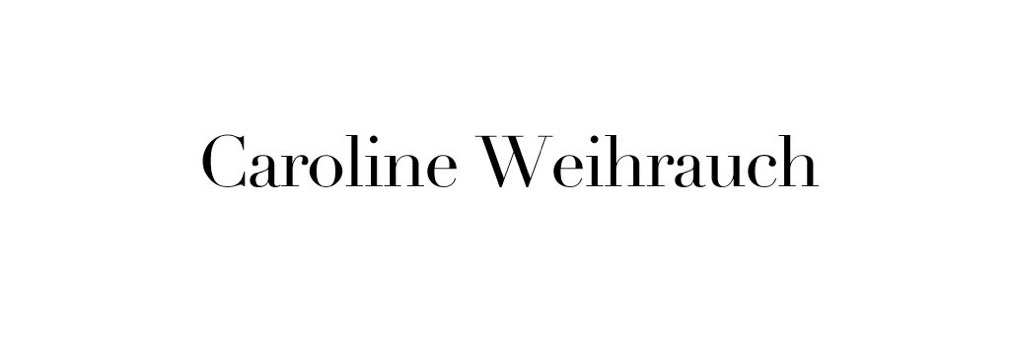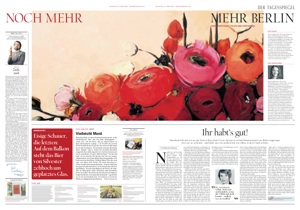Alster Elbe Harvesterhude Paris Bar Could use a drink Kippenberger Venedig Golf-Landschaften Grün Rot Weihrauch Ölfarbe Malerei Zeichnung Kunst Realismus Figurative Malerei Tagesspiegel sinnlich 1991 rot orange blau offen sinnlich warmherzig charmant Interieurs Park Hotel Brenner Rosen Blüten Ranunkeln Päonien Pfingstrosen Blumen-Bilder Madrid Miami Barocke Malerei Atmosphäre Quallen Ornamente Mussolini-Architektur Italien Royal Chelsea Flower show Bildende Künstler in Berlin Bildende Künstler in Deutschland Hamburger Malerin Feng Shui Malerei Innenarchitektur Hamburg Landschaft Schloss-Gärten Potsdam Schloss-Räume Preussen Preussischer Kulturbesitz Sammlung Deutsche Bank Leinwände Veduten Berliner Künstler Hamburger Künstler Wilfried Weihrauch Loetz-Vasen Böhmisches Glas Reichenberg Gartenkunst Boesner Samt Streifen Hell dunkel München Kunstsammlungen Auftragsarbeiten Fotografie FNC-Club Michele Würthle Reinald Nohal Innenansichten Paris Bar Guy Debord Portrait Orient Türkei Sufismus Omar Ali Shah Arif Ali Sha Andalusien Flamenco 19.Jahrhundert Biedermeier Tapeten Muster Pinselstrich Zartheit Poesie Leidenschaft Kochen Malerei Golf-Hotel Stromberg Arosa-Hotel Travemünde Luis C Jacob Sheba Medical Center Gala Auktion Christies Schinkel-Architektur deutsche Romantik Bach-Kantaten Bach-Fugen Esotherik Eckhart Tolle Byron Katie the work Resonanz Heilung Tradition Frau Weiblichkeit Kussfest Caroline
A DECLARATION
OF LOVE FOR THE PARIS BAR
Berliner Zeitung, April 10, 2011
Say, has Kippenberger returned to the Paris Bar? No, not at all. This picture, the showpiece of the new exhibition “These are a few of my favorite things,” which opens tomorrow at the Galerie Friedmann-Hahn, is from Caroline Weihrauch. The Berlin artist sees her work as a tribute to the legendary Kippenberger picture—and as a declaration of love for the spirit of the Paris Bar. She named it “Let’s gel lost” because, as she says, “there it’s easy to get carried away.” Next to the Paris Bar pictures Caroline Weihrauch displays scenes from the Sea of Galilee and her jellyfish paintings, addressing the fragility of the sea. The mix works.

MIDDAY PASSION FOR COLORS
Berliner Zeitung, December 13, 2007
Venice, India, the interiors of the Palaces of Potsdam – these three culture-rich themes inspire the work of Berlin-based painter Caroline Weihrauch. She paints in her studio from memory, rather than in person, nonetheless leading to a more baroque styling, higher intensity and more passion in her work than one might assume. In her landscape paintings, land, sky and water are saturated with color, becoming abstract surfaces that lose themselves in their own endlessness. Just as associatively, Weihrauch takes everyday objects or other minutiae out of their overall context – an upholstered armchair, a wrought-iron railing or the tip of a gondola with infinite longing for its final stop.
THESE ETERNALLY INTERRUPTED THOUGHTS
Berliner Zeitung, May 10, 2003
A video screen shows a woman’s hand hastily sketching. Ute Weiss-Leder wants to take part in a design contest for the Rosa-Luxemburg monument. However, it is proving to be difficult, even though in her installation she covers the playpen with a desktop upon which her child, who can be seen in a second monitor, slumbers peacefully away. But this is not always so. Again and again used diapers land on her sheets of paper. Again and again the paper is crumpled up out of frustration. Everyday life is like a storm cloud imposing itself upon clarity. With these “eternally interrupted thoughts,” as Caroline Weihrauch calls them, the double life of a mother and artist turns into a laborious experiment. Weihrauch, who lives in Berlin, had been told by her competition-conscious colleagues, that these two undertakings were incompatible with each other (analogous to that irrepressible cliché of the lone genius that lives only for art in solitude). When she was pregnant, she received a towel as a present, on which was lovingly embroidered in cursive lettering “Great! Another one down!” She took it to the Künstlerhaus Bethanien, where “double bind. art – children – career,” curated by Signe Theil, opens this Sunday. This group exhibition consists of 27 artists/mothers from several generations, among which include a few veterans of the 70s such as Valie Export, Rune Mields and Jenny Holzer. But Caroline Weihrauch presents an even more unbelievable find next to her luxuriant pastel pictures of children’s toys: a commercial from last year on Radio Paradiso that ran, “We give the capital what it needs the most,” as if taken right out of the worst period of Germany’s history. The goal of the campaign was thus: a thousand new babies for Berlin. And to make it worthwhile for the mother, a kindergarten place would be ensured as a birthing bonus. At which all you can do is shake your head. These perhaps wrong, but nonetheless depressing examples of the motherhood role create an understandable weariness, causing the viewer to come away with precisely the same perspective as many of the participating artists. Judith Samen photographed herself in a housedress, holding her naked son under her arm, her free hand subversively holding a bread knife; Niki de St. Phalle lets out the rhetorical sigh, “How can I in one day find enough time?” (when you play four hours with the children, want to have two hours of tantra sex and then also have to go to work) in a cheerfully illustrated letter; Eva Bertram photographed a modern-day triptych showing photos of a grumpy and tired mother, a child on a playground, and an alert grandmother beside a slide. Through fictitious newspaper articles, the New York artist Aura Rosenberg suggests that when your kids get on your nerves, simply make them objects of your artwork. Because when an artist/mother can’t break away from familial duty, she then brings the children into her own artistic context, which is vaguely the general theme of “double bind.” We must accept these relationships as they are and not treat them with disrespect.
AT THE BAR
Der Tagesspiegel, May 21, 2011
Strange breeds indeed. In Caroline Weihrauch’s “Jellyfish,” incredible shapes sprawl over her canvases like baroque ornament. And then there is the quite unusual species of the urban kind that fascinated her as a student at the former Hochschule der Künste. Whenever the painter stopped in at the Paris Bar on Kantstraße at the beginning of the nineties, the place would transform itself in her mind into an impossible dream—with the light, the colors and of course the illustrious guests.
At some point, Weihrauch herself became a part of this scene just as she was also developing the theme of longing in her work. The paintings, which are on display at the Galerie Friedmann-Hahn, are always from different perspectives, but contain one constant: the focus is the interior of the bar.
And with such, the oddly thrilling ambiance of the rooms in early evening is set, when all the tables are laid, the white pyramid-folded napkins throw soft shadows and the light reflects in the wine glasses. They wait, ready for their nightly performance that the bar patrons guarantee soon thereafter.
Other artistic works reside on these dark-colored walls. The art hanging in the Paris Bar is legendary and comes from stars of the art world such as Martin Kippenberger, Daniel Richter and Sarah Lucas, some of whose paintings were compensation that the proprietors had earlier accepted in order to settle outstanding bar tabs. “Let’s get lost” (19 500 Euros), one of the latest of Weihrauch’s paintings, tells a complicated tale. Kippenberger had already used the bar as a motif for a painting that had hung there for a long time. When it had to be auctioned off in 2009, Daniel Richter created another copy with variations for the empty spot left on the wall.
Weihrauch depicts the artist’s viewpoint, reproducing the furnishings in a refined play of image and reflection, but also adding yet another facet by representing the bar in such splendid colors that it seems more beautiful than it is in reality. The magic of her painting reveals itself by going its own way and moving details into view, even though what is actually represented is absent.
Similarly composed are the artist’s landscape paintings, which are panoramas with a far-off horizon and architecture that stands out like treasures resting on blue pillows. And even her “Jellyfish” belong to this principle; in the three-part series called “Deep water horizon,” Caroline Weihrauch brings the destroyed beauty of the deep sea to life in a fictional abstraction.
ALICE IN FLOWERLAND
Der Tagesspiegel, March 17, 2012
Alice in Flowerland. Using 70 x 140 cm canvases, Caroline Weihrauch enlarges her peonies and buttercups to gigantic proportions. The rich reds and pink-colored petals of “Plink” encourage the observer to crawl right into a floral world. Here, mere observation becomes a celebration, a sensuous pleasure in which the viewer swears he can nearly smell the painted blooms. Like an artistic descendant of Max Liebermann, Weihrauch is a deft colorist, which is rare to find nowadays. In May, this particular progeny of Berlin painting culture can be found at the Royal Chelsea Flower Show in London, where the artist will exhibit her king-size flowers.
THE ARTIST
Der Tagesspiegel, March 17, 2012
Caroline Weihrauch, 50, is a painter of longing. Her still lifes, interiors and landscapes encourage the viewer to daydream. She calls her paintings a “declaration of love for the beauty of things and of life.” A native of Hamburg, Weihrauch studied in Berlin under Wolfgang Petrick and H. J. Diehl. She is most known for her Paris-Bar paintings, rich in ambiance and luxuriant color, which capture the moment before the rush of guests arrives. As a student, she longed to be a part of this social tableau; as a seasoned painter she would become the chronicler of this nightly stage of the Berlin bohemian scene. Caroline Weihrauch also opens up a field of vision in her landscape series, which is infused with near impossible amounts of green, blue and ochre. Far in the distance of these paintings, towers a single architectural motif, such as a church or a palace that swims in a sea of color.








